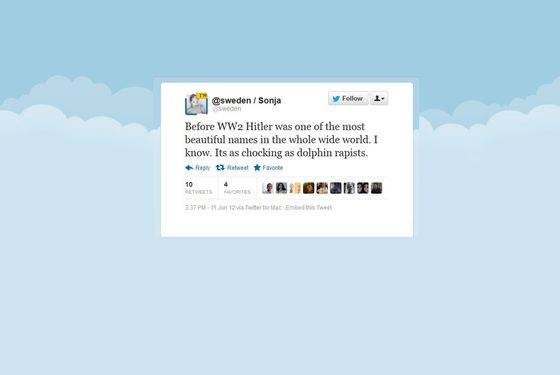
Co-author: Shawn Powers, Georgia State University
State-funded broadcasters face more competition for publics’ attention. With the wide proliferation of information sources globally, audiences have the option of accessing a multitude of news outlets while increasing their own engagement through two-way communications technologies. The growth of other international broadcasters, or state news media aimed at foreign audiences, as well as private news media, is part of increasingly complex informational environments.
For state broadcasters constrained by host governments’ strategic interests and/or lethargic bureaucracy, adapting to the information age is especially challenging. They are bound by old missions, institutional pressure, declining budgets, and domestic politics, not to mention the presumption of propaganda by many receiving publics. However, the source of their new challenges—the growth of information and communication technologies—also offers a possible way forward.

These factors along with financial crises and the demise of clear, global geopolitical polarity, has engendered identity crises among many state-run broadcasters already facing the ever-difficult dilemma between being news with instrumental purposes – the pursuit of the host country’s national interests – while not being dismissed as propaganda.
State broadcasters can re-define themselves by focusing on specific information poor and weakly governed societies, often termed failed or non-transitioning states – of which there are still dozens according to Foreign Policy’s Failed State index.
In a newly published paper in a special symposium in the Journal of Public Deliberation, we propose international broadcasters find renewal by fostering deliberative technologies in such societies. By sponsoring mediated forums for average Somalis, Afghans, Haitians and so on to discuss public matters, international broadcasters can aid development through hosting safe communicative spaces for articulating public concerns, reaching shared expectations of governance, and, advancing norms of citizen participation in public affairs.
 To support this policy prescription, we offer two case studies. The first is Voice of America’s Middle East Voices (MEV) online portal, launched in November 2011. Its goals are explicitly deliberative. According to managing director Davin Hutchins, “We wanted to find a place where people could start conversations about the news. There are plenty of sites and organizations that cover the Middle East. What we wanted was a site that enhanced the level of dialogue.”
To support this policy prescription, we offer two case studies. The first is Voice of America’s Middle East Voices (MEV) online portal, launched in November 2011. Its goals are explicitly deliberative. According to managing director Davin Hutchins, “We wanted to find a place where people could start conversations about the news. There are plenty of sites and organizations that cover the Middle East. What we wanted was a site that enhanced the level of dialogue.”
VOA’s use of deliberation technologies in non-transitioning and authoritarian states facilitated informed dialogue on divisive issues, much of which is based on user-generated content and collaborative journalism. While MEV has not reached nor involved large audiences, it offers a new model for international broadcasters to encourage the flow of information and political expression where domestic media are under assault. Such deliberative infrastructure for national and transnational dialogue is valuable as an avenue for circumventing state censors and informational controls.
The second is “Somalia Speaks,” a collaborative project spearheaded by Al Jazeera English that combines several communication technologies to solicit short message service (SMS) texts about Somalia and shares them on its website. Soud Hyder, an AJE staff member, said the project’s aim is to circulate “the perspective of normal Somali citizens” and let them “tell us how the crisis has affected them.” It tapped into the growth of mobile phones in Somalia.
Respondents expressed how the famine and decades of conflict impacted them. For example, one SMS posted on January 1, 2012 read:
“I lost both my parents and the elder brother in the bloodshed that has been going for the last 20 years. In addition, my students and their children all perished in this conflict and there is a lot which I can’t count all here.”
 The graphic to the right is from the project’s webpage and it outlines the process. AJE partnered with Souktel, a cell phone service provider with a development ethos, to provide the local response number to receive the SMS texts and the subscriber lists. A crowd-sourcing platform, Crowdflower, let 80 volunteers translate 1,000 messages into English. Using Ushahidi’s mapping application, AJE’s website displayed the messages in both map and catalog formats. This exemplified the possibilities that arise from an international broadcaster working collaboratively with other technology platforms and organizations.
The graphic to the right is from the project’s webpage and it outlines the process. AJE partnered with Souktel, a cell phone service provider with a development ethos, to provide the local response number to receive the SMS texts and the subscriber lists. A crowd-sourcing platform, Crowdflower, let 80 volunteers translate 1,000 messages into English. Using Ushahidi’s mapping application, AJE’s website displayed the messages in both map and catalog formats. This exemplified the possibilities that arise from an international broadcaster working collaboratively with other technology platforms and organizations.
With adjustments, both the MEV and “Somalia Speaks,” could be used to better facilitate domestic information flows. For example, AJE could have done more to re-circulate the texts through Somali media. This would be easier, of course, if Al Jazeera goes forward with its planned East Africa news channel. Similarly, VOA could find ways to expand circulation of user-generated content beyond the Internet, perhaps through its broadcasting functions. These projects do show how international broadcasters can engage in particular media poor environments to benefit local publics.
Some may argue that deliberation, or institutionalized public exchange, is impossible in authoritarian and failed or failing states. Lisa Wedeen’s excellent ethnographic study of public engagement in Yemen, Peripheral Visions: Publics, Power, and Performance in Yemen (2008), shows how overly formalistic definitions of deliberation do not capture the vibrancy of public sphere practices in informal, everyday life settings. She examined Qat chews, in which circles of men share the mildly narcotic leaves while discussing public issues and exchanging information. This is a form of Yemeni citizenship in action even in lieu of a fully functioning state or formal civil society. Our proposal would mean more mass mediated channels for the spreading of such deliberation among wider audiences.
Broadcasters may protest that this puts their primary audiences in a handful of countries. This proposal complements rather than supplants current broadcasting. Also, as the case studies show, such projects can generate valuable content for reporting. For example, AJE reported on a market fire in a region in Somalia where there are no journalists after receiving text messages. This alone can give state-sponsored news organs something novel to contribute. Such reporting adds to, rather than replicates or spins, the dominant news stream, and is more interesting than the typical fare showing the host country in a good light.
We recognize that development problems cannot be resolved by talk and the exchange of ideas alone. Rather than a panacea, this is about a pragmatic use of state resources to benefit foreign publics with the understanding that this is not done selflessly. There must be mutual benefit.
Building on notions of deliberative development, we argue that international broadcasters can offer positive, incremental improvement of the internal flow of information and expectations, which can fuel growth in civil society and improve informal or quasi-governance structures – potential precursors to more responsive institutions. By serving as proxies in places with weak media, broadcasters get a new purpose, a developmental one, and this is a step forward for both.
Of course, since they are intervening in foreign information spaces, broadcasting agencies must approach carefully, self-reflexively and in partnership with groups and audience members in receiving countries.
If this proposal interests you, read our full paper, “A New Purpose for International Broadcasting: Subsidizing Deliberative Technologies in Non-transitioning States.” Feedback is welcome either below in the comments or email us directly at smp [at] gsu [dot] edu. Or find us on Twitter: @shawnpowers and @wyoumans.















